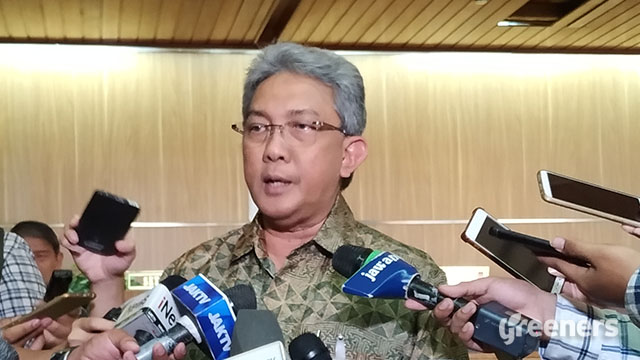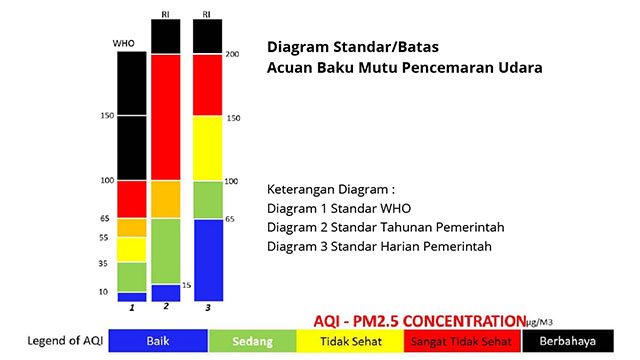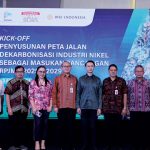Jakarta (Greeners) – After the types of air quality monitoring device, the Indonesian government and civil society are now debating about air pollution standards.
Based on the 1999 government regulation on air pollution, to analyze air pollution data based on National Standard, of which 0-65 microgram (µg)/m3 is categorized as moderate, 101-150 µg/m3 as unhealthy, 151-200 µg/m3 as very unhealthy, and above 200 µg/m3 as dangerous.
Meanwhile, standards used by civil society or NGO are based on the US standards, or US AQI, which applies 0-10 µg/m3 as good, 10-35 µg/m3 as moderate, 36-65 µg/m3 as unhealthy, 56-65 µg/m3 as unhealthy, 66-100 µg/m3 as very unhealthy and above 100 µg/m3 as dangerous.
READ ALSO : Citizens Filed Lawsuit against the Government for Air Pollution
Previously, Director general of pollution and damage control, Karliansyah, said that based on the 1999 government regulation, then the concentration for PM2.5 should be delivered by daily average or yearly average.
“To determine air quality, it should use daily average or yearly average. We cannot use temporary data or just that data. Based on our data, air quality is still good, but it does not good for babies and elderly,” said Karliansyah in Jakarta on Friday.
Based on the Ministry’s data, daily average of PM2.5 between 1 January to 30 June 2019 in Jakarta was in good condition or healthy as it is below National Ambience Air Standards, which are 31.49µg/Nm3 out of 65 µg/Nm3.
However, if compare with WHO standards, 25 µg/Nm3, then Jakarta’s air quality is considered moderate. Meanwhile, Ahmad Safrudin, director executive of Lead Gasoline Eradication Committee, said that the ministry insisted to state air quality in Indonesia, especially Jakarta, in good condition, because they refer to daily average of 65 microgram/m3 in accordance with PP 41/1999.Source : Lead Gasoline Eradication Committee.
The diagram compares on standards of air pollution. Diagram Number 1 is WHO standard, Diagram Number 2 is government’s yearly standards, and Diagram Number 3 is government’s daily standards.
“However, the latter, there’s potential of manipulation by making yearly average data through compiling daily average data which will result in lower numbers. What happens nowadays us that the standards are out-of-date (diagram 2 and 3). In addition, the government is using daily average (diagram 3) to analyze yearly average. Then, to make loose analysis for daily average so that 90-102µg/m3 are considered moderate, though they’re actually unhealthy,” he said on Monday (09/07/2019).
READ ALSO : World Environment Day 2019 Marks The Campaign To Curb Global Air Pollution
According to the Committee, air quality condition for PM2.5 in Jakarta in 2018 and 2019 using the old standards were also not healthy.
The yearly average standard in 2018 was 45,62 µg/m3 and 2019 was 37,8 µg/m3. Meanwhile, yearly average standards based on the regulation for PM2.5 is 15 µg/m3.
He said that DKI Jakarta’s monitoring result for the past two months, daily average of PM2.5 is between 94,22 – 112,86 µg/m3. Hence, it is a huge mistake if the analysis results of Jakarta turned out to be good. “So, using the existing standard, air quality of Jakarta is unhealthy,” he said.
Reports by Dewi Purningsih




















































